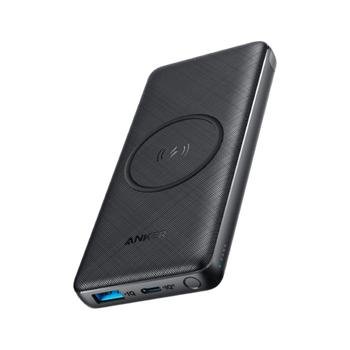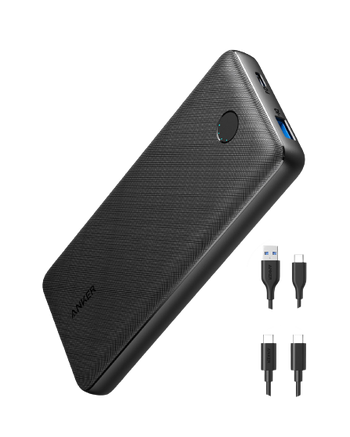- Wireless charging capability
- Multiple charging options
- High capacity
- Safety features for secure charging
- Supports fast charging
- High capacity
- Can charge laptops
- Safety features for secure charging
- Slightly bulky
- Wireless charging is slower
- Slightly heavy
- Pricier than basic models
Anker PowerCore III 10000 Wireless vs Anker PowerCore 20000 PD
When it comes to staying powered on-the-go, Anker portable chargers are a popular choice among consumers. Two of their top models, the Anker PowerCore III 10000 Wireless and the Anker PowerCore 20000 PD, offer unique features that cater to different user needs. In this comparison, we'll dive into the details of each product to help you decide which one is best for your mobile lifestyle.
Capacity and Size
The Anker PowerCore 20000 PD has a larger capacity of 20,000mAh, making it ideal for extended trips or heavy users who need to charge multiple devices throughout the day. In contrast, the Anker PowerCore III 10000 Wireless has a smaller capacity of 10,000mAh, which is still sufficient for a day's worth of charging but may not be enough for power-hungry devices or longer trips.
In terms of size, the PowerCore 20000 PD is understandably larger and heavier due to its higher capacity, measuring 6.3 x 3 x 0.8 inches and weighing 12.8 ounces. The PowerCore III 10000 Wireless, on the other hand, is more compact at 5.4 x 2.9 x 0.7 inches and weighs 7.4 ounces, making it easier to carry in a pocket or purse.
Charging Speed and Technology
Both Anker portable chargers support fast charging, but they differ in their implementation. The PowerCore 20000 PD features Power Delivery (PD) technology, which allows for faster charging of devices that support it, such as the latest iPhones and Android smartphones. It can deliver up to 18W of power, making it suitable for quickly topping off larger batteries.
The PowerCore III 10000 Wireless, as its name suggests, also supports wireless charging, allowing you to charge compatible devices without the need for cables. It uses Qi-compatible technology and can deliver up to 5W of wireless power. Additionally, it features Anker's proprietary PowerIQ technology, which can detect the optimal charging speed for your device and adjust accordingly.
Ports and Connectivity
The PowerCore 20000 PD has two USB-A ports, one of which supports PD, as well as a USB-C port that can be used for both input and output. This makes it a great option for users who need to charge multiple devices at once or want the flexibility to use either USB-A or USB-C cables.
The PowerCore III 10000 Wireless has two USB-A ports, but neither of them supports PD. However, it does have a USB-C port that can be used for input and output, making it compatible with newer devices that use this connector.
Additional Features
Both Anker portable chargers have built-in protection mechanisms to prevent overcharging, overheating, and short circuits. They also come with LED indicators to show the remaining battery level and charging status.
The PowerCore III 10000 Wireless has a unique feature called "Trickle Charging," which allows it to charge low-power devices like wireless earbuds or smartwatches at a slower rate to prevent overcharging.
Conclusion
In conclusion, both Anker portable chargers have their strengths and weaknesses. The PowerCore 20000 PD is ideal for users who need a high-capacity charger with fast charging capabilities, while the PowerCore III 10000 Wireless is perfect for those who want a compact, wireless charging solution.
If you're looking for a charger that can keep up with your power-hungry devices and don't mind a slightly larger size, the PowerCore 20000 PD might be the better choice. On the other hand, if you prioritize portability and convenience, the PowerCore III 10000 Wireless is an excellent option.
Ultimately, Anker portable chargers are known for their reliability, durability, and performance, so you can't go wrong with either of these models. By considering your specific needs and preferences, you can choose the one that best fits your mobile lifestyle.































